Description
Fluoroscopic imaging, used in a wide range of medical procedures on patients of all ages, is performed by practitioners with diverse backgrounds and from a wide variety of medical specialties. These procedures expose patients, practitioners and staff to radiation. Fluoroscopic radiation risks range from a minimal risk of stochastic effects to life-threatening tissue reactions.
The amount of radiation used in each procedure is determined entirely by the practitioner. Therefore, all users of fluoroscopy require appropriate training. Fluoroscope operators and their supervisors need to be aware of the radiological risks of these procedures to patients, practitioners and staff, and to have sufficient technical knowledge to operate fluoroscopes optimally. At present, training is inhomogeneous and may be sufficient to comply with professional certification requirements, limited to generalized institutional training, or merely minimal on-the-job instruction.
Recommendations for appropriate fluoroscopy radiation safety and equipment use training, including pediatric considerations, will be developed for each risk group. These recommendations will outline, in broad terms, the content of individual and recurrent training and will suggest policies to minimize unnecessary or duplicate training. The level of training needed for each practitioner should be determined by the highest radiation dose procedures they are authorized to perform.
Fluoroscopic equipment may be labeled voluntarily by the manufacturer as compliant with International Electrotechnical Commission Standards 60601-2-54 (general radiographic/radioscopic equipment) or 60601-2-43 (equipment for fluoroscopically guided interventions). Equipment that conforms with 60606-2-43 incorporates additional features intended to improve safety in high-dose procedures. This statement can provide guidance to manufacturers for determining the appropriate standard for their equipment. It may also minimize claims by manufacturers that high radiation dose procedures are appropriately performed using fluoroscopes lacking features necessary for radiation management during high dose procedures.
Purpose
To group fluoroscopic procedures into a small number of tiers based on patient radiogenic risk, as determined by radiation dose. These tiers can be used to determine necessary radiation training for practitioners and to guide the selection of appropriate fluoroscopic equipment.
Membership

Stephen Balter
|
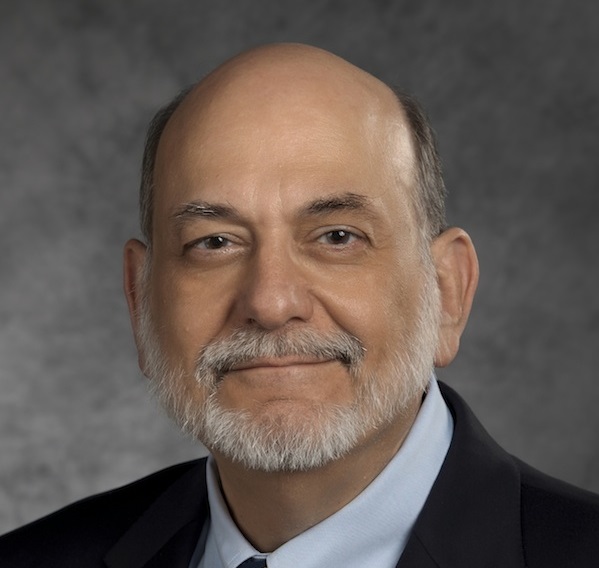
DONALD L. MILLER
Dr. Miller was elected to NCRP in 2006. He currently serves on the Board of Directors and as Chair of Program Area Committee 4 (Radiation Protection in Medicine). He is an author of NCRP Reports Nos. 168, 172, 177, 180, 184, and 185, and Statements Nos. 11 and 13. He served on the International Commission on Radiological Protection (ICRP) Committee 3 (Protection in Medicine) as a member from 2010 to 2013, and as Vice-Chair from 2013 to 2017. He is an author of ICRP Publications 117, 120, 135, and 139. He was Vice-Chair for the U.S. Environmental Protection Administration’s Federal Guidance Report No. 14, is a consultant to the International Atomic Energy Agency, and is a member of the World Health Organization’s Core Group of Experts on radiation protection of patients and staff. Dr. Miller was Professor of Radiology at the Uniformed Services University in Bethesda, Maryland from 1993 to 2012. He has served as Associate Editor of Radiology and the Journal of Vascular and Interventional Radiology and is an author of more than 200 papers in peer-reviewed journals and more than 40 book chapters and reports. He is a Fellow of the Society of Interventional Radiology (SIR) and the American College of Radiology (ACR), and an Honorary Member of both the American Association of Physicists in Medicine and the International Organization for Medical Physics. He chaired SIR’s Safety and Health Committee from 1999 to 2011 and the ACR Guidelines Interventional Committee from 2008 to 2012. His research interests have centered on radiation protection in medicine. |

Kimberly E. Applegate
has served on NCRP meeting programs, Report No. 170, and currently serves as a member of Scientific Committee (SC) 4-12 Risk Management Stratification of Equipment and Training for Fluoroscopy and SC 4-13 on patient protective shielding in imaging. Dr. Applegate is a retired professor of radiology and pediatrics from the University of Kentucky in Lexington. Dr. Applegate’s policy and research work in radiation protection, including over 200 publications, has contributed to an improved understanding of the structure, process and outcomes of how pediatric imaging is practiced, including the volume of ionizing imaging in children, the variation in radiation dose in pediatric and adult imaging, and their quality improvement. She has worked collaboratively around the world to educate and improve practice. Dr. Applegate is an elected member of the Main Commission of the International Commission for Radiological Protection as the chair of Committee 3, focusing on radiation protection in medicine, serving on a number of task groups that address guidance on the use of medical imaging procedures and radiation therapies. She joined, from its start, the Steering Committee for the Image Gently Alliance to improve safe and effective imaging care of children worldwide. Kimberly has received awards that include the American Association for Physicists in Medicine’s Honorary Membership and the American Association for Women in Radiology’s Marie Sklowdoska Curie Award for her unique roles in leadership and outstanding contributions to the advancement of women in the radiology professions. |
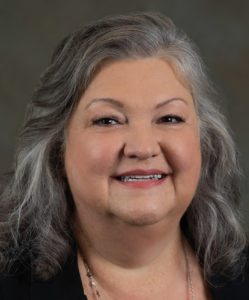
Lisa Bruedigan
is the Director of the Radiation Section of the Texas Department of State Health Services, where she has oversight of all aspects of the state's radiation control program, including licensing, operations, inspections, investigations, environmental monitoring, and emergency response, having a direct impact on the health and safety of the people of Texas through monitoring compliance with regulations. She started her radiation career as a radiological technologist before moving to the state as an inspector and then a trainer for the x-ray program. Ms. Bruedigan was recently elected as the Chair-Elect of the Conference of Radiation Control Program Directors (CRCPD) and served two previous terms as Treasurer and as Member-at-Large. She also chairs two CRCPD committees and serves on four task forces. She is the current CRCPD liaison to the American College of Radiology. Ms. Bruedigan represented CRCPD at the International Atomic Energy Agencies (IAEA) conference on the Radiation Safety Culture in the United States and again on the efforts CRCPD has made to fulfill the Bonn Call to Action. She has also presented at a conference hosted by the World Institute of Nuclear Securities on the Texas 24-month storage rule for radioactive material. She recently gave a presentation on the U.S. Perspective of Radiation Safety in Non-Food Commodities at the 53rd Radiation Safety Standards Committee Meeting hosted by the IAEA. |
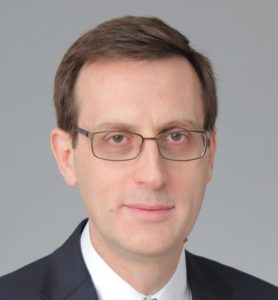
George D. Dangas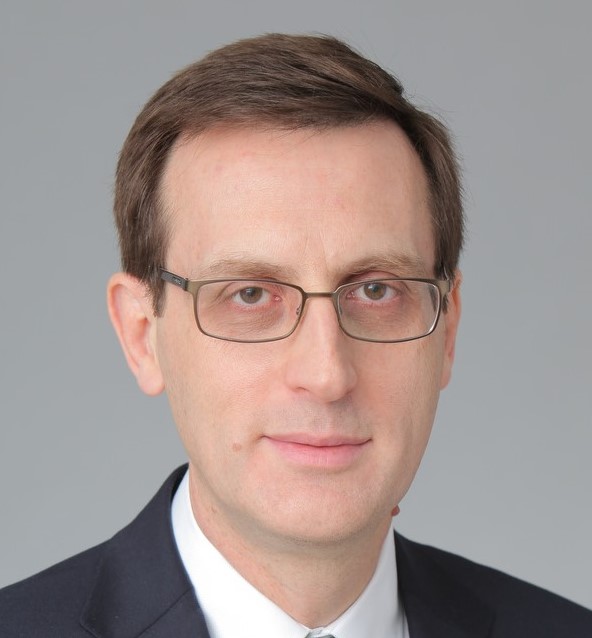
Professor of Medicine (Cardiology) and Surgery (Vascular) at Icahn School of Medicine and the Mount Sinai Hospital in New York and Director, Cardiovascular Innovation at Mount Sinai Hospital, New York; Transcatheter Cardiovascular Therapeutics Director, Interventional Cardiology Principle and Practice Textbook Editor (Wiley London). After Medical/Doctorate studies at the National Kapodistrian University of Athens and Medical Officer, Hellenic Navy, he trained in Medicine at Brown University, and Cardiology and Interventional at Mount Sinai. Among the founding faculty of Cardiovascular Research Foundation New York City, he held faculty positions at Lenox Hill and Columbia University Medical Center; he led the founding of Interventional Fellowship Programs in both. He is in the Executive Committee of the Society for Cardiovascular Angiography and Intervention (SCAI) and served as Trustee of the American College of Cardiology (ACC), Fellow of the European Society of Cardiology and the American Heart Association, founder of ACC Interventional Council/Section and Cardiology Chair at Onassis Heart Center. He is Master Interventionalist (SCAI), ACC Distinguished Fellow 2019, ACC Distinguished Teacher 2017, and in numerous Top/Super Doctors and WHOisWHO listings. |
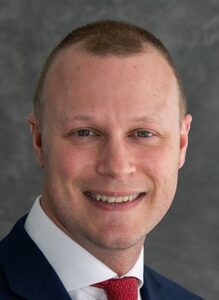
Dustin A. Gress
is Senior Advisor for Medical Physics at the American College of Radiology (ACR), providing internal medical physics expertise across ACR departments and projects, including government relations, public relations, registries, accreditation, guidance, among others. He earned bachelor’s and master’s degrees in Nuclear Engineering and Radiological Sciences at the University of Michigan. Mr. Gress then worked as a Diagnostic Medical Physicist for over 7 y at Upstate Medical Physics, where he also served as Deputy Director of the first CAMPEP-accredited private practice residency program in imaging physics. Mr. Gress then spent 6.5 y in the Department of Imaging Physics at MD Anderson Cancer Center, supporting clinics providing patient services in nuclear medicine, positron emission tomography, interventional radiology, mammography, and computed tomography. He also served as a Clinical Coordinator in MD Anderson’s Residency Program in Imaging Physics, and as an instructor in its Graduate School of Biomedical Sciences’ Medical Physics Program. Mr. Gress is board certified in Diagnostic Radiologic Physics by the American Board of Radiology, and in Nuclear Medicine Physics and Instrumentation by the American Board of Science in Nuclear Medicine. He is a Fellow of the American Association of Physicists in Medicine. |
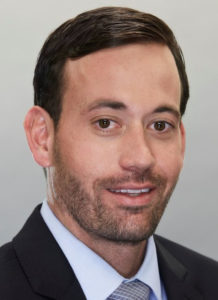
Andrew Kuhls-Gilcrist
is the Chief physicist for interventional imaging at Canon Medical Systems USA and is a Diplomat of the American Board of Radiology. He is currently the Vice Chair of the Medical Imaging and Technology Alliance (MITA) Interventional Group, having been elected by industry to a leadership position for 10 consecutive years, and is an Expert to the U.S. National Committee to the International Electrotechnical Commission with membership in various project teams, working groups, and maintenance teams. Dr. Kuhls-Gilcrist received his PhD from the University at Buffalo, researching next-generation x-ray imaging technologies at the Canon Stroke and Vascular Research Center. He has authored extensively, and his work has received many accolades, including the American Association of Physicists in Medicine Jack Fowler Junior Investigator Award, Canon’s Made for Life Presidents Award, and multiple recognition honor awards from the U.S. Food and Drug Administration. |

Thomas L. Morgan
is a Senior Health Physicist at Versant Medical Physics and Radiation Safety (Kalamazoo, Michigan). Prior to joining the Versant team, Dr. Morgan spent more than 20 y as a Radiation Safety Officer in a large community hospital, two major research universities with medical and dental schools and attached teaching hospitals, and a private company that manufactures radioactive sources for medical, industrial, research and gauging applications.
Dr. Morgan currently serves as a volunteer community/scientific member of institutional review boards at the University of South Florida and Sarasota Memorial Hospital. In the past, he served on radioactive drug research committees and human use of radiation in research committees at Columbia University Medical Center and University of Rochester. He served on the Board of Directors of the Health Physics Society (2017 to 2020), is currently chair of the Title Protection Committee and is currently President of the Florida Chapter of the Health Physics Society.
Dr. Morgan received a BS in Biology, BA in Chemistry, and MS and PhD in Radiological Sciences from the University of California, Irvine. He is a Certified Health Physicist and is licensed to practice Medical Health Physics in New York, Florida, and Texas. He has taught radiation biology as Adjunct Professor Health Sciences (Radiation Therapy Option) at California State University, Long Beach and taught health physics as Adjunct Professor of Applied Physics and Applied Mathematics (Medical Physics) at Columbia University.
He completed postdoctoral fellowships in the Carcinogenesis Laboratory at Michigan State University in and in Radiological Physics at Battelle Pacific Northwest National Laboratory. He received his board certification in Comprehensive Health Physics from the American Board of Health Physics in 2005. He is licensed to practice Medical Health Physics in New York, Florida, and Texas.
Dr. Morgan has served in leadership positions in the Health Physics Society. He served as President of the Western New York Chapter and the Florida Chapter. He has been a Plenary Member since 2003, was Chair of the Continuing Education Committee, sat on the Board of Directors, and is currently the Chair of the Title Protection Committee. He currently sits on biomedical research institutional review boards for two institutions in his local community. He reviews and comments on research proposals for human subjects. At two previous institutions, he sat on or was appointed Chair of committees that reviewed and commented on the scientific merit and radiological safety of proposals requesting to use byproduct materials for biomedical research on human subjects.
|
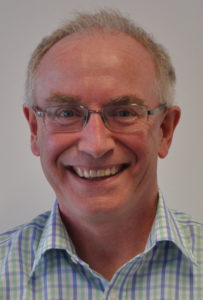
Andy Rogers
is the Lead Interventional Microwave Process Engineering at Nottingham University Hospitals National Health Service Trust [having retired and returned!] and also a recent President of the British Institute of Radiology. He currently chairs the U.K. working group investigating how best to set diagnostic reference levels (DRL) in interventional procedures. He was recently a member of an International Commission on Radiological Protection working group that published a report on DRLs and a full member of the International Electrotechnical Commission Maintenance Teams for interventional and general x-ray equipment and have just been co-opted on to two international working groups looking at quality control of radiological equipment in general (IEC) and angiography imaging equipment (European Federation of Organisations For Medical Physics). He currently leads the joint British Institute of Radiology- Institute of Physics and Engineering in Medicine equipment standards activities. Current research interests are skin and staff dose assessment and optimisation in interventional cardiology and radiology. |
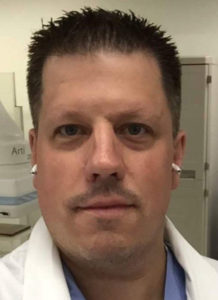
Kevin A. Wunderle
is a board certified diagnostic medical physicist at Cleveland Clinic and an Associate Professor of Radiology in the Cleveland Clinic Lerner College of Medicine of Case Western Reserve University. He received his Master’s degree in Medical Physics from Cleveland State University and PhD in Medical Physics from the Wayne State University School of Medicine. He is an expert in the area of fluoroscopic imaging and related radiation protection, serving on several national and international committees. He is active within the American Association of Physicists in Medicine serving in leadership roles for several committees. He has published a number of peer-reviewed articles and co-authored several book chapters related to fluoroscopic imaging and radiation protection. His research interests are related to fluoroscopic imaging, fluoroscopic radiation dosimetry, and patient protection. |


 is a Clinical Professor of Radiology and Medicine at Columbia University. He earned an MS in Radiological Physics and a PhD in Experimental Physics. He is certified in Radiological Physics by the American Board of Radiology and licensed by New York State in Diagnostic Imaging, Radiation Therapy Physics, and Medical Health Physics. He is a past President of the Radiological and Medical Physics Society of New York, past Vice President of the Radiological Society of North America, a member of the Standards and Safety Committees of the Society for Interventional Radiology, and a member of editorial and review boards of several scientific journals. He received the Marvin M.D. Williams award from the American Association of Physicists in Medicine (AAPM) in 2017. He is a fellow of AAPM, the American College of Medical Physics, the American College of Radiology, the Society for Cardiovascular Angiography and Interventions, and the Society of Interventional Radiology. He currently serves on International Electrotechnical Commission working groups responsible for safety and performance standards for projection and interventional radiology. He has been a member of NCRP Council for more than a decade. He chaired scientific committees that produced NCRP Report No. 168, Radiation Dose Management for Fluoroscopically-Guided Interventional Medical Procedures and NCRP Statement No. 11, Outline of Administrative Policies for Quality Assurance and Peer Review of Tissue Reactions Associated with Fluoroscopically-Guided Interventions (2014). He has over 100 refereed publications in the areas of radiological imaging, radiological health, and related topics.
is a Clinical Professor of Radiology and Medicine at Columbia University. He earned an MS in Radiological Physics and a PhD in Experimental Physics. He is certified in Radiological Physics by the American Board of Radiology and licensed by New York State in Diagnostic Imaging, Radiation Therapy Physics, and Medical Health Physics. He is a past President of the Radiological and Medical Physics Society of New York, past Vice President of the Radiological Society of North America, a member of the Standards and Safety Committees of the Society for Interventional Radiology, and a member of editorial and review boards of several scientific journals. He received the Marvin M.D. Williams award from the American Association of Physicists in Medicine (AAPM) in 2017. He is a fellow of AAPM, the American College of Medical Physics, the American College of Radiology, the Society for Cardiovascular Angiography and Interventions, and the Society of Interventional Radiology. He currently serves on International Electrotechnical Commission working groups responsible for safety and performance standards for projection and interventional radiology. He has been a member of NCRP Council for more than a decade. He chaired scientific committees that produced NCRP Report No. 168, Radiation Dose Management for Fluoroscopically-Guided Interventional Medical Procedures and NCRP Statement No. 11, Outline of Administrative Policies for Quality Assurance and Peer Review of Tissue Reactions Associated with Fluoroscopically-Guided Interventions (2014). He has over 100 refereed publications in the areas of radiological imaging, radiological health, and related topics.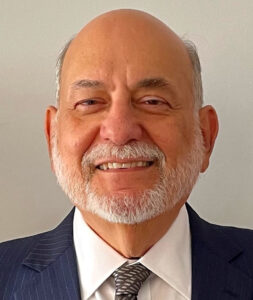 is the Chief Medical Officer for the Office of Radiological Health at the Food and Drug Administration’s (FDA) Center for Devices and Radiological Health. He earned a BA from Yale University and an MD from New York University, and completed a residency in diagnostic radiology and a fellowship in interventional radiology at New York University Medical Center. He is board certified in Diagnostic Radiology and Vascular and Interventional Radiology. Prior to joining FDA, he practiced interventional radiology for three decades at the National Institutes of Health and the National Naval Medical Center in Bethesda, Maryland.
is the Chief Medical Officer for the Office of Radiological Health at the Food and Drug Administration’s (FDA) Center for Devices and Radiological Health. He earned a BA from Yale University and an MD from New York University, and completed a residency in diagnostic radiology and a fellowship in interventional radiology at New York University Medical Center. He is board certified in Diagnostic Radiology and Vascular and Interventional Radiology. Prior to joining FDA, he practiced interventional radiology for three decades at the National Institutes of Health and the National Naval Medical Center in Bethesda, Maryland.  News & Events
News & Events